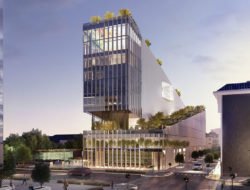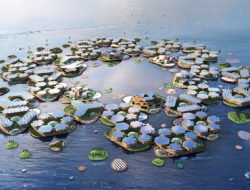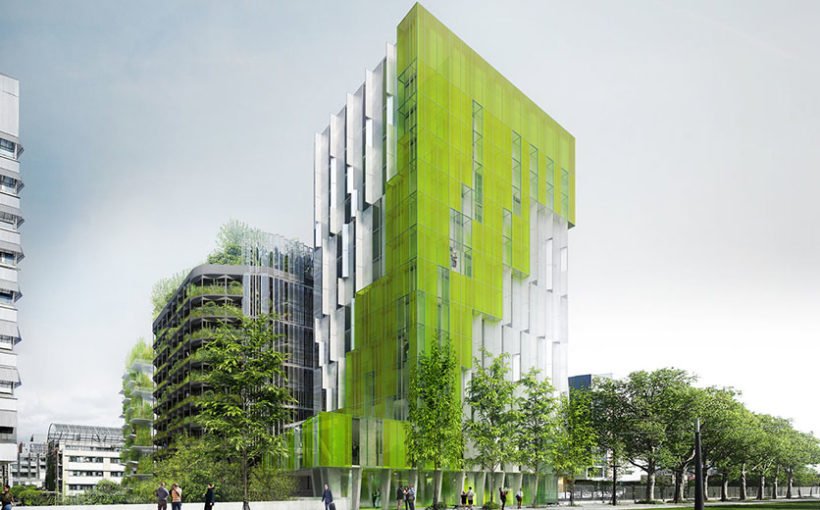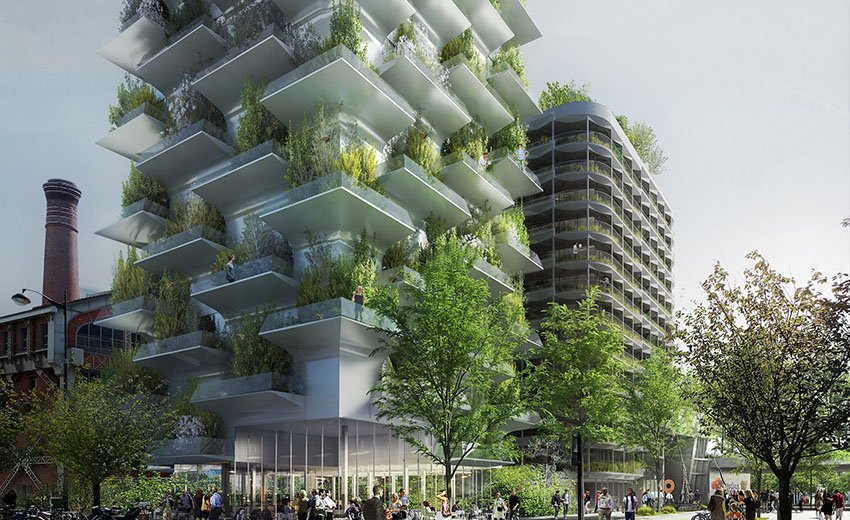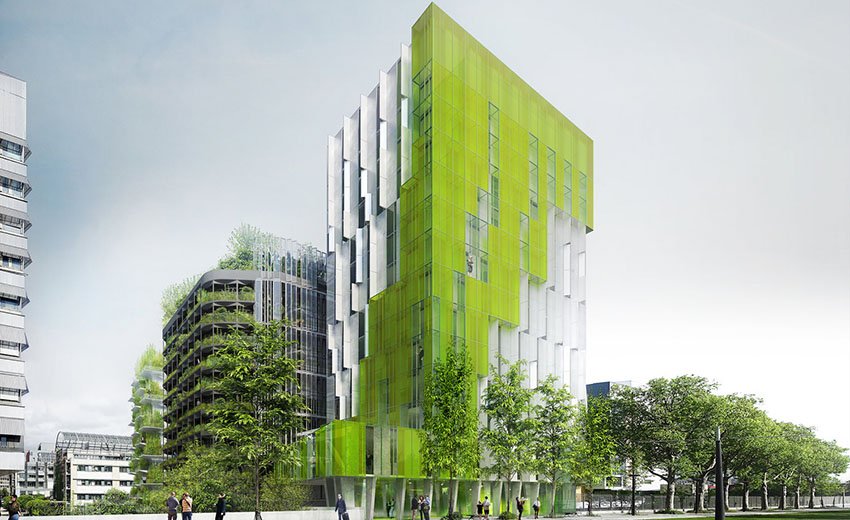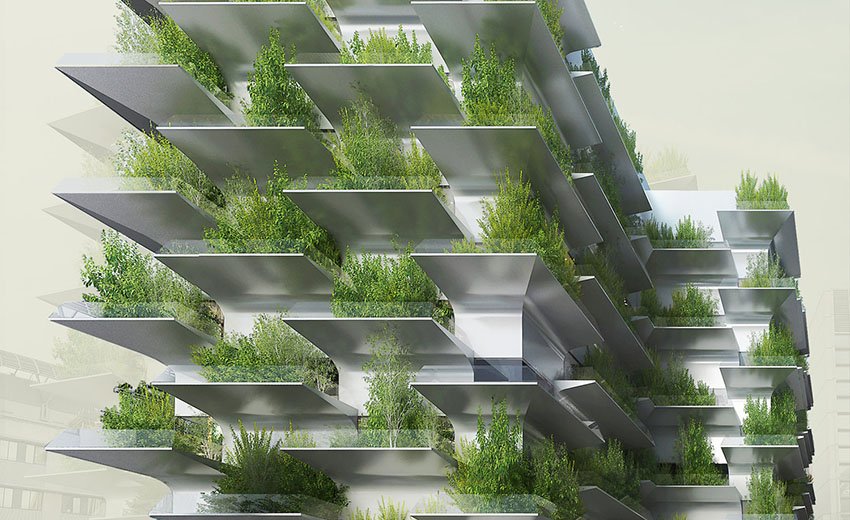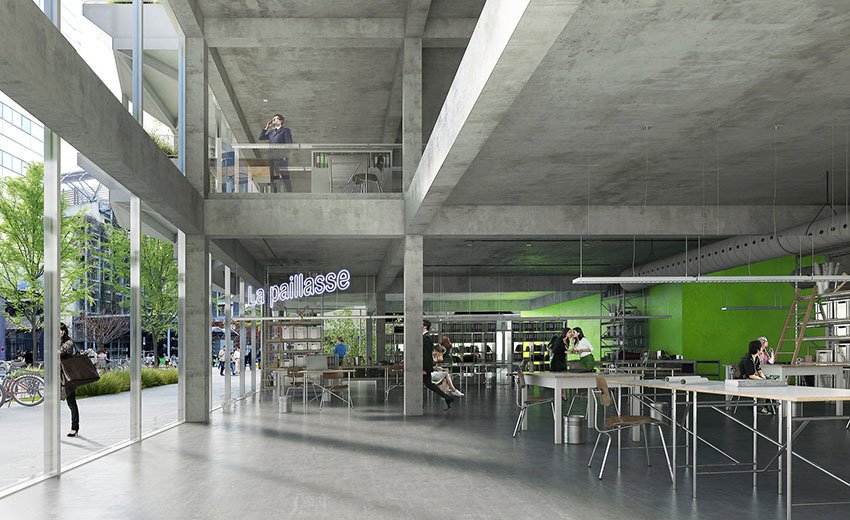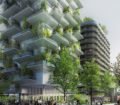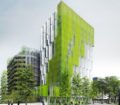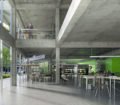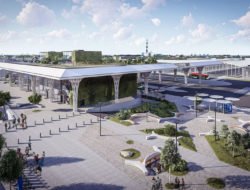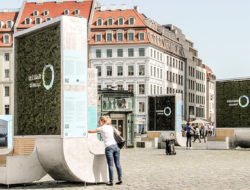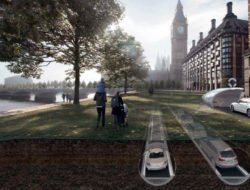This organic façade, made by the French, will produce oxygen and swallow the city’s CO2. A futureproof and straightforward idea.
Here’s a project that will want you to take a deep breath in the morning. As part of the “Réinventer Paris” project, XTU Architects have unveiled their building In Vivo. An utterly crazy building they intend to build in the heart of Paris to deal with its recurring pollution problems. This set of dazzling towers with mind-boggling curves fits perfectly in its surroundings. Nestled on the Boulevards des Maréchaux, these three buildings will be dressed with an active bio-façade, cultivating microalgae for medical research.
A true laboratory building, In Vivo will consist of three buildings that promote natural views, exposure, lighting and ventilation, as well as optimal urban integration. It comes with 13,000m2 of housing for accession to ownership, intermediate housing and residences for students and young researchers; 1,200m2 of places open to all audiences; 255m2 for an alternative pub; and more than 2,000m2 of gardens and vegetable gardens, dedicated to all forms of small-scale urban agriculture in loggias, under glass or in the open air on the roof.
The factory of living elements
The In Vivo project is a manifesto. Faced with the environmental and health impacts of galloping hyper-urbanization, cities are at the heart of a major challenge of the 21st century: integrating the living into the construction process, serving a more just, sustainable and resilient society. “This new generation facade will allow the cultivation of microalgae with high added value for medical research within biological solar collectors (photobioreactors),” the company explains in a statement.
Another advantage: the micro-algae feed on waste such as wastewater from the building and consume the carbon dioxide emitted by the boilers while generating oxygen. “This productive bio-façade will allow the building to exploit the heat captured by the photobioreactors for hot water and heating“, continues the company, thus reducing its energy consumption below the threshold of 48 kWh/m2/year of the Paris climate Plan. A simple idea to be implemented in all major cities.
Tags: In Vivo, microalgae, pollution, Réinventer Paris, XTU Architects

































